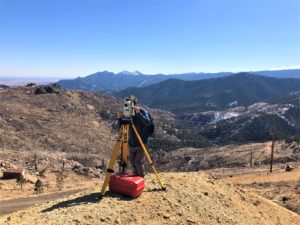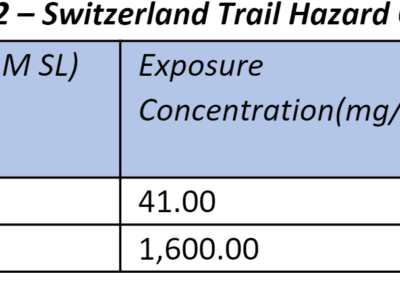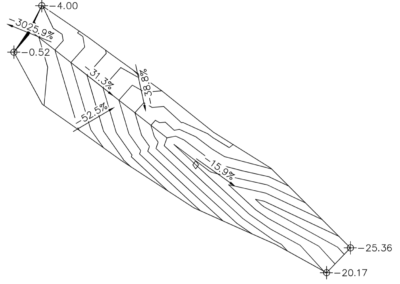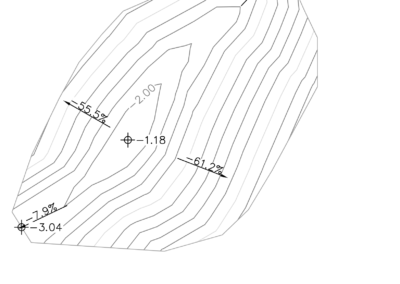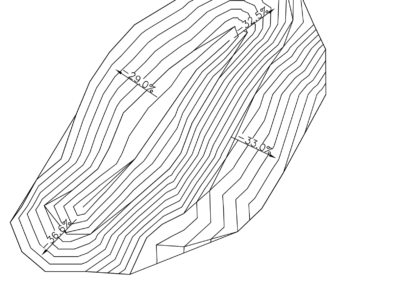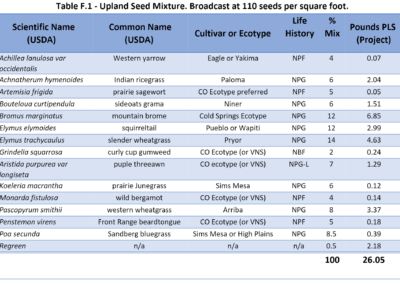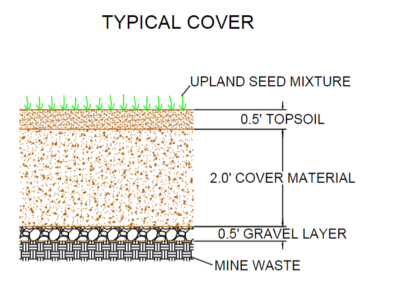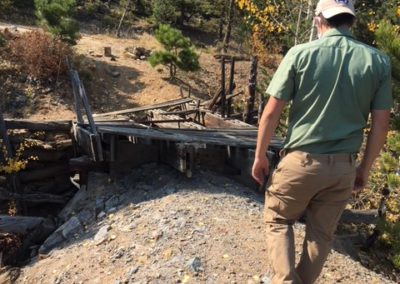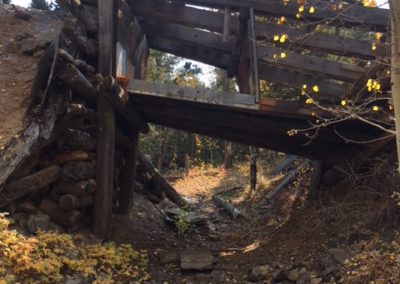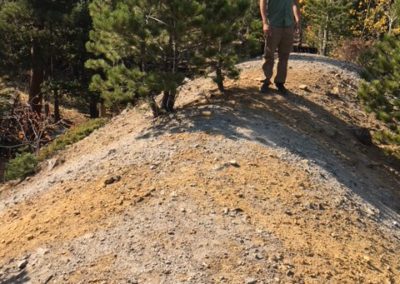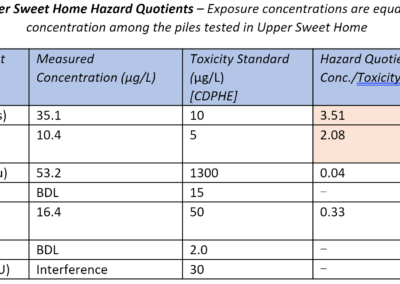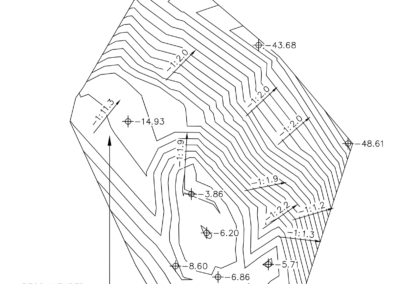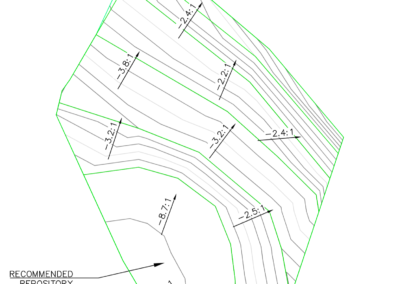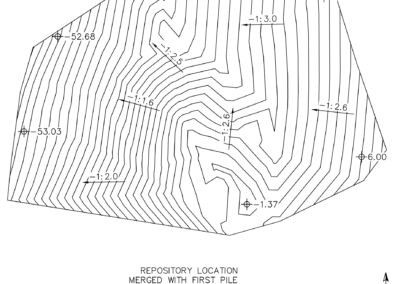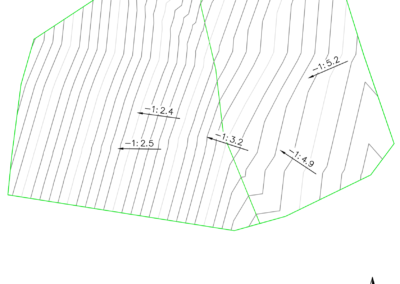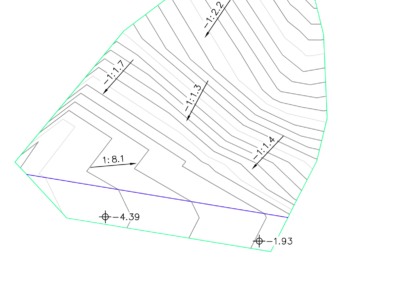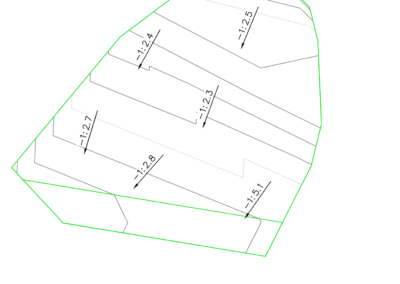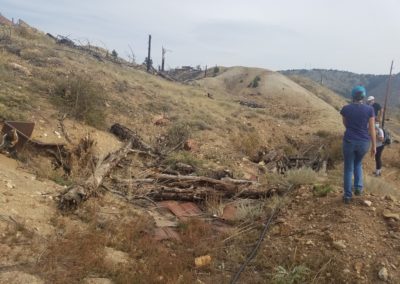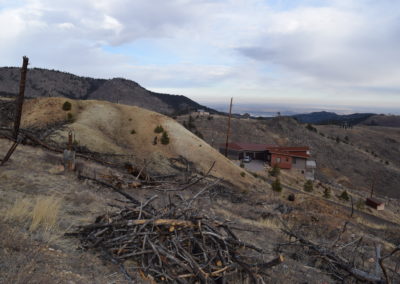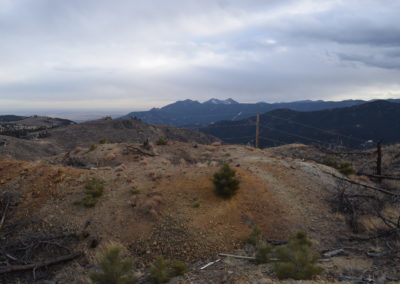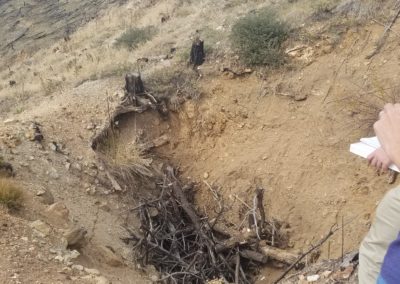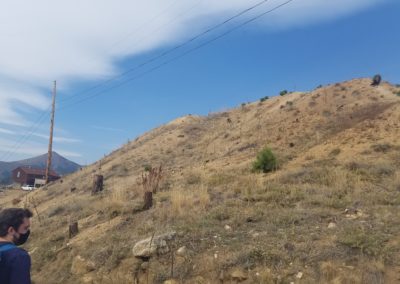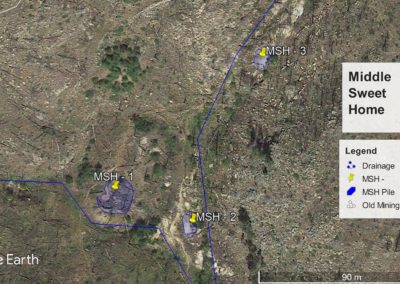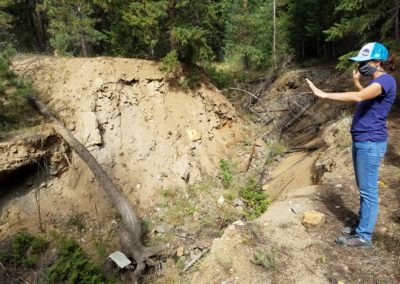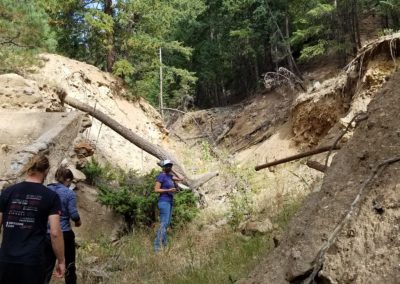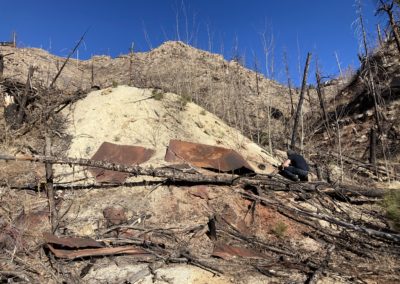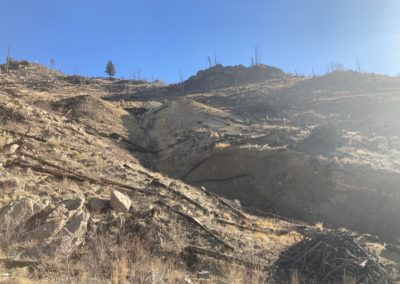Mine Waste Stabilization
Overview
Video
Elevator Pitch
The Boulder Watershed Collective asked our team to investigate mine waste piles in Fourmile Watershed and develop a 30% design package for the mine waste piles we found most concerning.
Our team visited Fourmile Watershed several times to meet with our client and make judgements about the public and environmental health hazards present at each site. We completed a physical assessment of all sites, a project feasibility study and considered accessibility constraints for construction and cooperation from landowners. A chemical risk assessment was also necessary to determine the relative toxicity of mine waste in each area. The team collected soil samples and referenced existing data for this part of our analysis.
Information from our site visits, feasibility study, and chemical risk assessment were compiled into a decision matrix. After evaluating our top four sites, the team decided to use a top-down approach and focus on Switzerland Trailhead and Upper Sweet Home Gulch for this design package. Similar to other projects completed in the watershed, our design includes three main concepts: regrading, capping and revegetation. We completed land surveys of our two sites to develop grading and capping plans and used a seed mix designed with our technical advisor, John Giordanengo, for the revegetation plan.
Additional recommendations include:
- A cultural and historical assessment of mining structures at the Switzerland Trailhead
- Closure of the three open mine shafts at Upper Sweet Home
- Testing the use of different topsoil to compost ratios on small mine piles at Upper Sweet Home to determine which ratio is most conducive to plant growth
- A wholistic assessment of Fourmile Watershed to identify other areas in need of remediation
Live Zoom Chat
Join Team Moose Safari live from
8:00 – 10:30 a.m. on April 29.
Please use passcode: Moose
Or iPhone one-tap: 12532158782,99271773192# or 13462487799,99271773192#
Or Telephone:
Dial: +1 253 215 8782 (US Toll) or
+1 346 248 7799 (US Toll)
Meeting ID: 992 7177 3192
Team Members
- Patrick Allan
- Jocelyn Johnson
- Samuel Martin
- Marlin Walkup
- Madysen Woltemath
- Brett Yoder
The Client
- Maya MacHamer, Boulder Watershed Collective
Acknowledgements
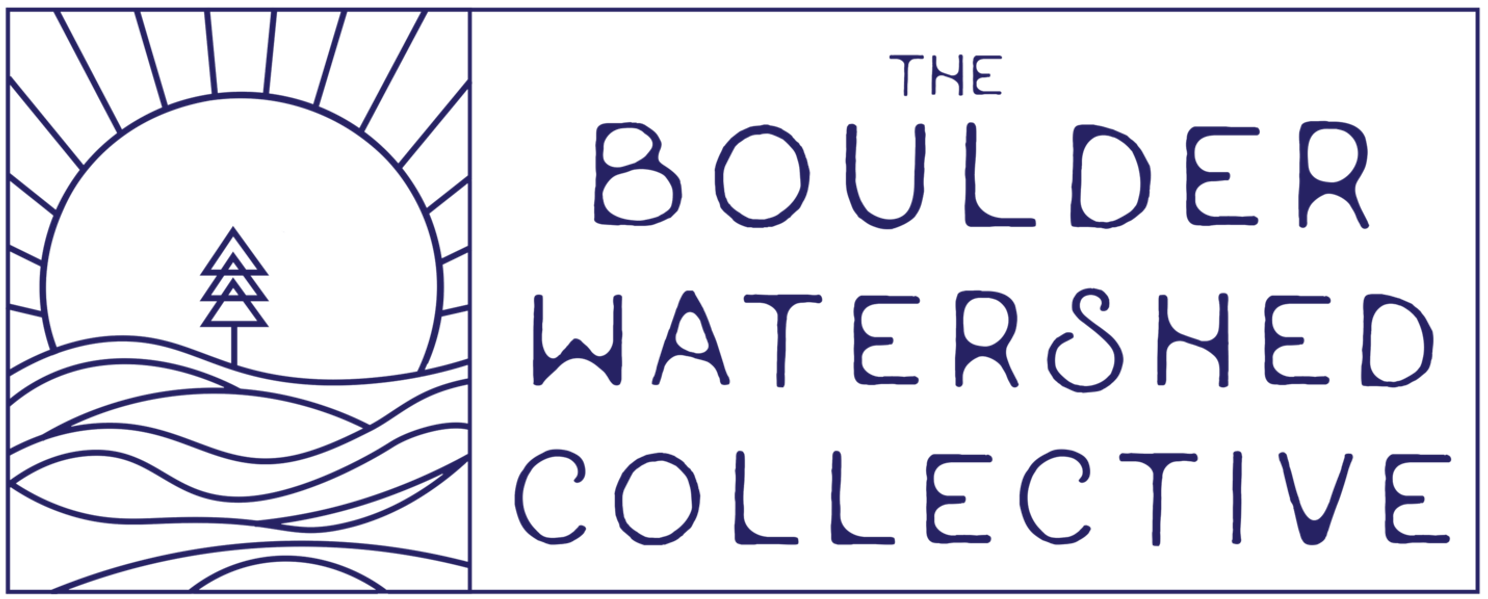
Project Advisors: Dr. Alina Handorean (Mines), Dr. Elizabeth Reddy (Mines)
Technical Advisor: Paul Kos (Stantec), John Giordanengo (Aloterra)
Soil Testing: Dr. Tom Wildeman (Mines), Kate Spangler (Mines)
Additional Acknowledgements: Prof. Jeff Holley (Mines), Dr. Bruce Honeyman, and the residents of Fourmile Watershed
Design Approach

While the team roughly followed the steps outlined below, it should be noted that this design process was iterative and nonlinear. The team continued site exploration and soil testing during the design development phase to improve our understanding of each site and to improve our overall design.
1. Site Exploration
Beginning in September 2020, the team conducted several site visits to investigate potential areas for remediation in Fourmile Watershed. After a longer tour of the entire watershed, the team focused on the Sweet Home Gulch and the Switzerland Trail areas. Maya MacHamer served as our guide for most of these visits and provided invaluable information about the watershed health, historical background, and community usage of all sites. We also visited the Ingram and Glitter Gulch active construction sites to gain a better understanding of what a completed project should look like.
2. Soil Testing
After identifying several piles of concern at Middle and Upper Sweet Home, the team collected soil samples from these piles and tested for metals concentrations, acidity, pH, and conductivity. No soil testing was needed at the Switzerland Trailhead because soil data had already been collected by Trout Unlimited during a previous assessment. Soil testing was not conducted at Lower Sweet Home because the team was unable to gain permission from the current landowner.
Soil testing revealed hazardous levels of arsenic and cadmium at Upper Sweet Home and arsenic, cadmium, and uranium at Middle Sweet Home. Trout Unlimited’s data showed hazardous levels of arsenic and lead in the Switzerland Trailhead pile.
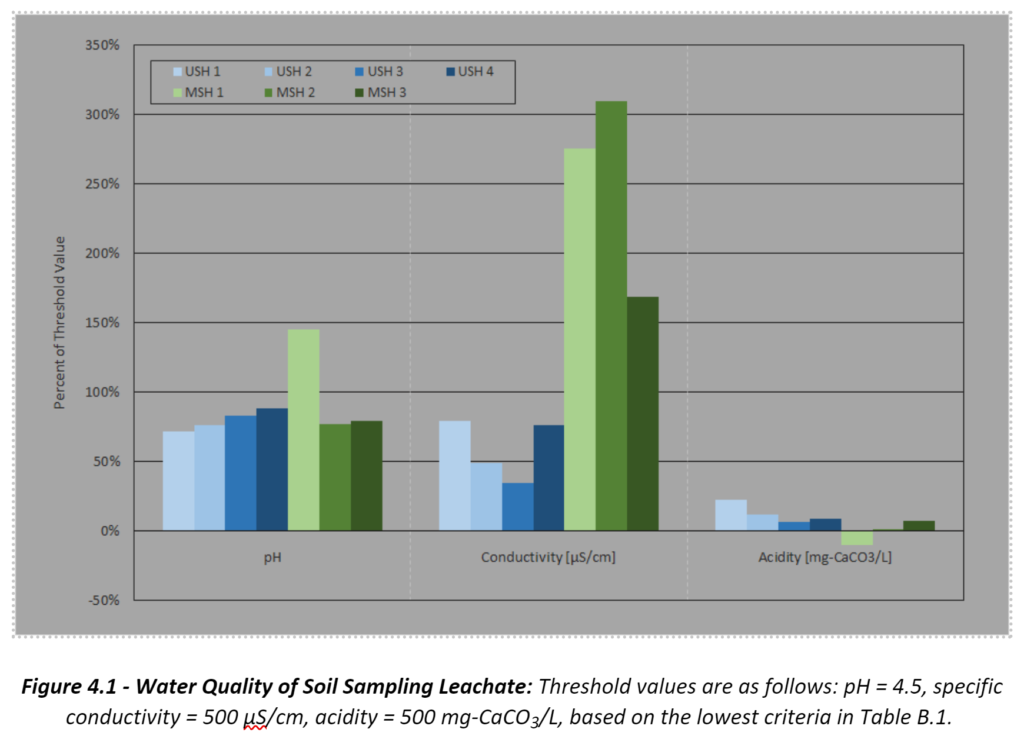
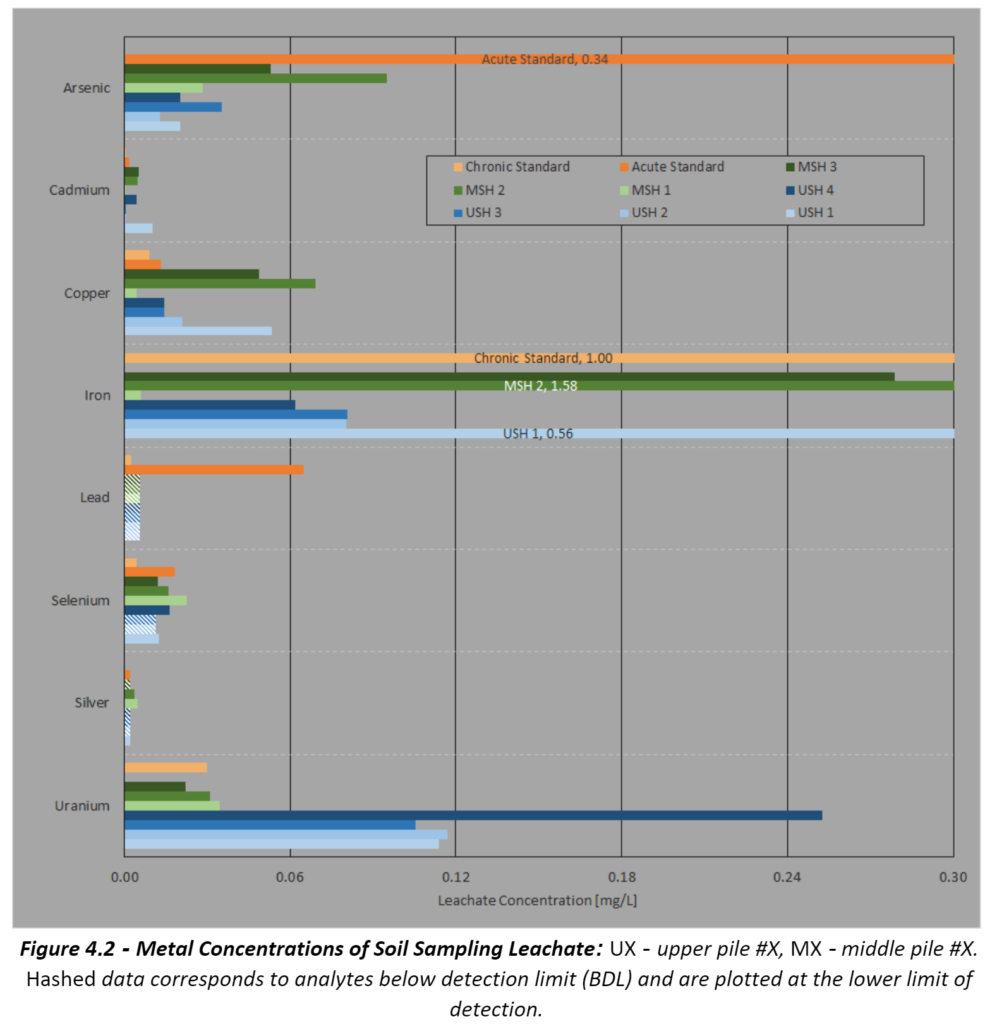
3. Site Selection
The team used a decision matrix to determine which of our top four sites would receive detailed designs. The team gave each site a score according to soil testing data, physical observations, and other site characteristics.
Though Upper Sweet Home and Middle Sweet Home scored the same, we chose to remediate Upper Sweet Home and take a top-down approach to the drainage. The Switzerland Trailhead was also prioritized because although it had a lower total, it was missing three pieces of data. We are confident that if this data was available, the Switzerland Trailhead would have scored the highest of all four sites. 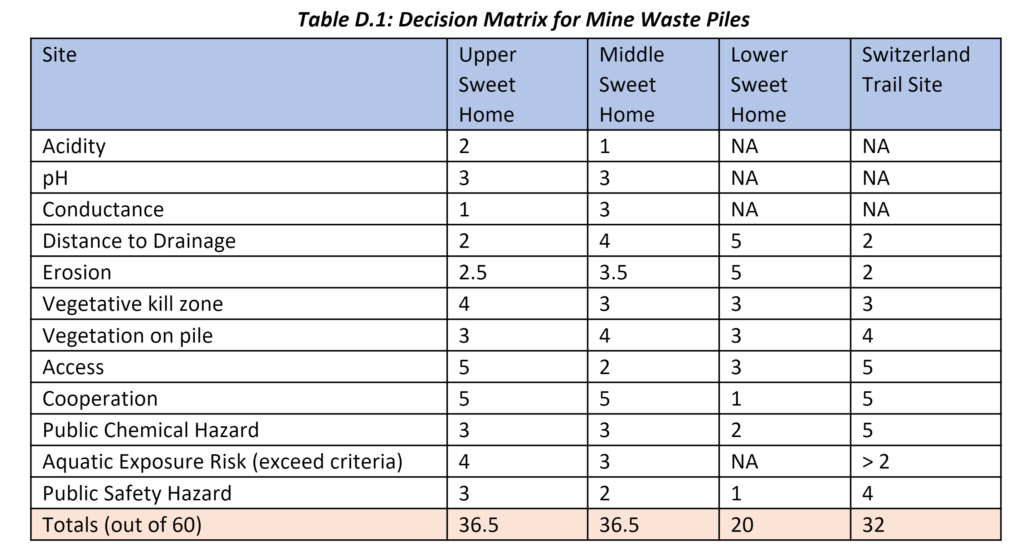
4. Design Development
The team began design development in January 2021. Some activities completed during this phase included:
Developing a remediation approach to each site. This included additional site visits to identifying repository sites and discussions with the client and technical mentors to identify best practices. We also observed construction at Glitter Gulch to see if any concepts could be applied to our two sites.
Land surveying: The team completed one survey at Upper Sweet Home and one survey at the Switzerland Trailhead to obtain more detailed elevation data. This data was essential for calculating accurate cut and fill volumes for each site.
Grading Plan: To complete the grading plan, the team conducted land surveys at each of the sites. Then, elevation data was taken and entered into AutoCAD Civil 3D to create existing ground, or the actual ground in place. Next, a grading plan was created using the tools in Civil 3D. The end result was a proposed finished ground that could be compared with the original existing ground to analyze for cut and fill earthwork values.
Capping Plan: The team used a standard capping plan similar to the one used at Ingram Gulch and Glitter Gulch. Capping will involve several layers of material: gravel, cover material, a compost mixture, fiber erosion control blanket and finally a seed mixture.
Revegetation Plan: The team worked with technical advisor John Giordanengo to develop a seed mix design containing several species of native grasses for our two sites. Both sites were located in upland areas (away from major drainage channels) and had similar soil conditions, so we were able to use the same seed mix across both sites.
5. Design Selection
After finalizing our engineering calculations, this stage included estimating the cost of work for both sites and discussing future work with the client. We also compiled our designs and calculations from the last two semesters into a report, video, and website.
Design Solution
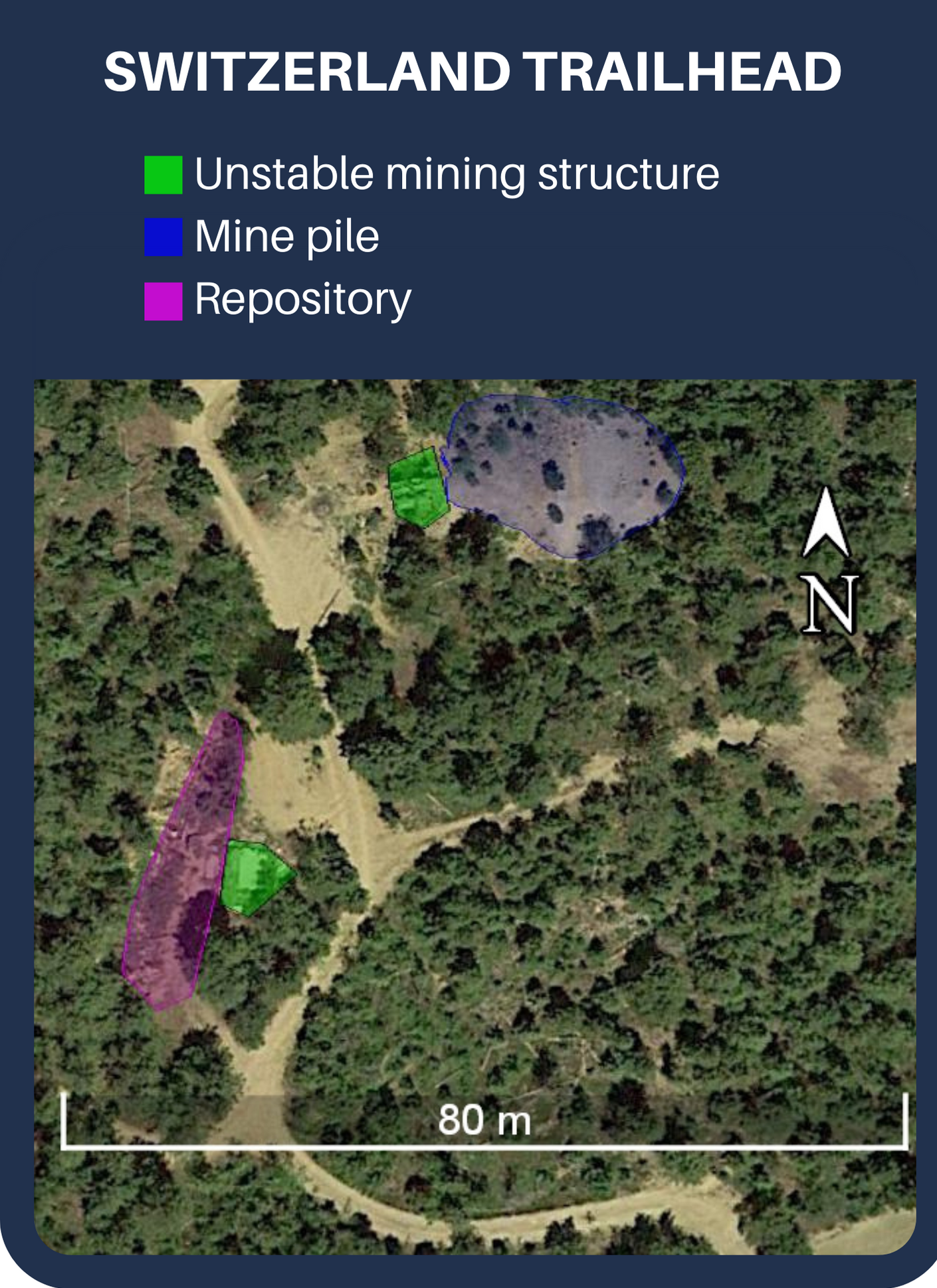
Chemical Hazards: Arsenic, Lead
Physical Hazards: A mining structure leaning against the mine pile and adjacent slope, collapsed mining structure near repository site. These unstable structures present hazards for recreationalists who have been known to hike and camp in the area.
Recommended Work:
- Regrade mine pile to slopes no steeper than 3:1
- Move all cut volumes from the mine pile to the repository site. Mound excess mine waste on top of repository site, keeping slopes 3:1.
- Cap and revegetate both areas according to the seed mix and capping design below.
- Conduct a historical/cultural assessment of the two mining structures to determine if they should be reinforced or removed from the site
Deliverables (see gallery below): Hazard Assessment, Grading plan, Capping Plan, Revegetation Plan, Cost Estimate
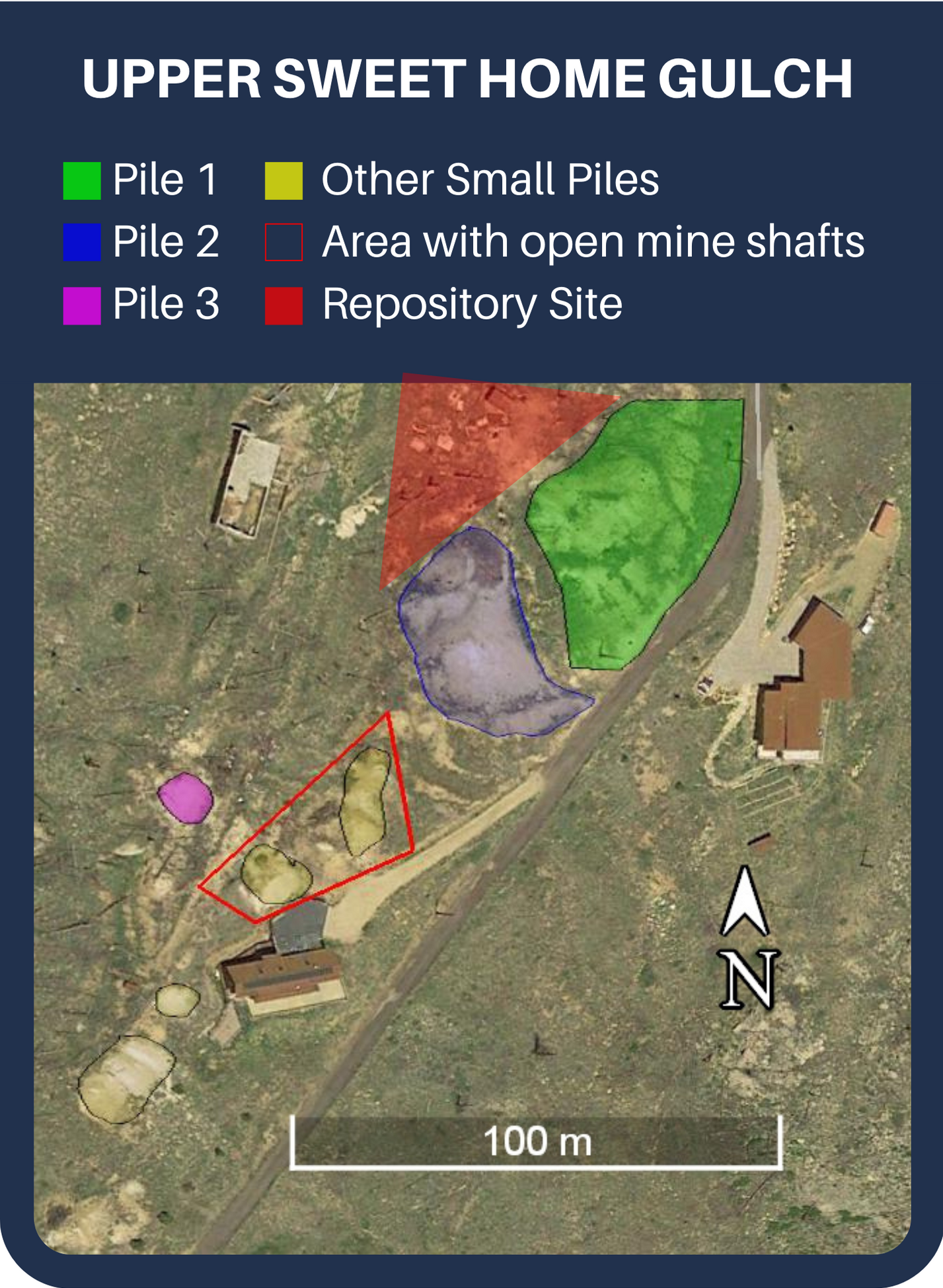
Chemical Hazards: Arsenic, Cadmium
Physical Hazards: Several open mine shafts (hazard to nearby homeowners and firefighters), various charred debris from forest fire
Remediation Approach:
- Grade back piles 1-3 to slopes no steeper than 3:1
- Place all cut volumes from the large piles and small piles into the flat area, located northwest of Pile 1.
- Close the open mine shafts located near the south residence.
- Test a variety of capping techniques on the other small piles to determine best growing conditions. These small piles are good candidates for this type of experimentation because they are small and located away from major drainage channels.
Deliverables (see gallery below): Hazard Assessment, Grading plan, Capping Plan, Revegetation Plan, Cost Estimate
Next Steps
Our team believes the following recommendations could help identify, prioritize and ultimately remediate other abandoned mining sites in the Boulder Watershed Collective’s jurisdiction. These efforts should improve water quality for communities downstream and improve safety for residents and thousands of recreationalists that frequent this area every year:
- Lower Sweet Home Gulch: There is a large pile which appears to be eroding rapidly into the creek. There is also evidence of past mining activity, including what looks to be a bridge and mine cart tracks. Future work should include this area of the watershed.
- Middle Sweet Home Gulch: The team conducted soil testing at this location and found elevated uranium, arsenic, and cadmium. Middle Sweet Home is located at the confluence of several drainage paths, increasing potential for contamination of downstream water bodies. Visual observations revealed significant erosion has occurred in this area already, and these observations suggest that stabilizing the piles in this area could improve water quality downstream.
- Complete a wholistic assessment of Fourmile Watershed to identify abandoned mine piles, open shafts and adits, and mining structures. This could involve observation on foot or by drone and soil testing at larger piles, particularly if they are located within drainage paths.
- Prioritize mine piles according to their toxicity, proximity to drainage areas, and accessibility.
- Create a landowner’s guide to help new and existing landowners understand how to identify and manage mine waste. This guide should also express the importance of safety precautions when living in legacy mine lands, liabilities, and regulatory processes. This work should be navigated with the EPA, BLM, and CDPHE. (example guidebook linked here)
- Locate abandoned mines and address hazards to passersby via signage, fencing, adit/shaft closures, etc. to ensure public safety near these sites.
Meet Team Moose Safari
Patrick Allan
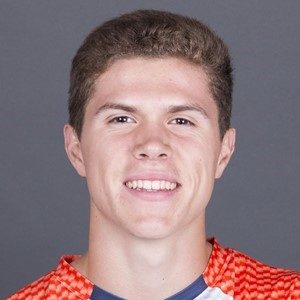 Project Role: Scrum Master/ Grading Plan Design
Project Role: Scrum Master/ Grading Plan Design
Class of 2021 | B.S. Civil Engineering
Hometown: Stillwater, MN
Patrick is currently a member of the varsity soccer team and will return to CSM in Fall 2021 to finish up a masters degree in civil engineering.
Jocelyn Johnson
 Team Role: Communications Lead/Website Builder
Team Role: Communications Lead/Website Builder
Class of 2021 | B.S. Civil Engineering, Minor: Public Affairs (McBride Honors Program)
Hometown: Bellingham, WA
Jocelyn is currently a Study Abroad Peer Advisor at the Office of Global Education and Project Co-Lead of the Denver Graywater Project (Mines Without Borders). She is excited to intern with Stantec for Summer 2021 before heading to University of Washington to complete a master’s degree in civil engineering. In her free time, she likes to bake and hike.
Sam Martin
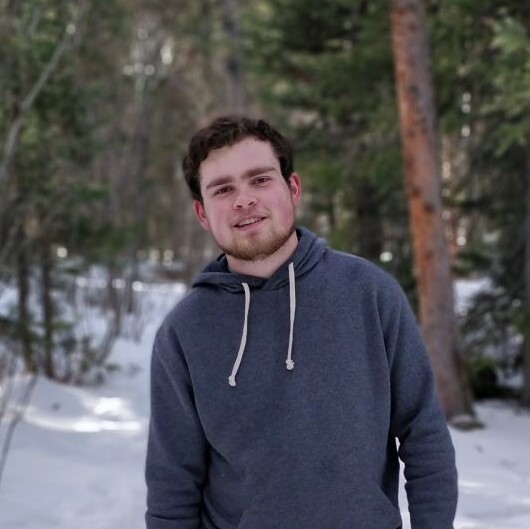 Project Role: Treasurer/Lab Coordinator
Project Role: Treasurer/Lab Coordinator
Class of 2021 | B.S. Environmental Engineering, Minor: Energy
Hometown: Castle Pines, CO
Sam Martin will graduate in May 2021 with a B.S. in Environmental Engineering and a Minor in Energy. Sam took the role of lab manager for the team and worked on the site selection and soil testing portions of the project. Following graduation, Sam plans to work as a Staff Environmental Engineer at Environmental Chemical Corporation in Lakewood, CO.
Marlin Walkup
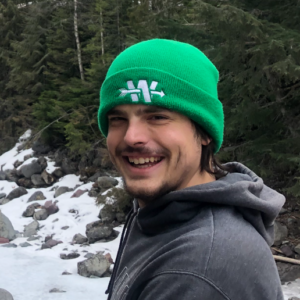 Project Role: Safety Manager/Cost Estimator
Project Role: Safety Manager/Cost Estimator
Class of 2021 | B.S. Civil Engineering
Hometown: Dallas, TX
After watching countless episodes of Gold Rush on Discovery, I knew Mine Waste Stabilization was a project I would be very interested in doing. After graduation I will work as a project engineer building and upgrading waste water treatment plants. I like to ski, hike, camp, and spend as much time outdoors as I can.
Madysen Woltemath
 Project Role: Media Coordinator/Capping Designer
Project Role: Media Coordinator/Capping Designer
Class of 2021 | B.S. Environmental Engineering
Hometown: Aurora, CO
Madysen is a member of the Society of Women Engineers. She has experience in field work, technical writing and data analysis, with a passion for hydrology and soil mechanics. As a Colorado native, she enjoys the outdoors and all her home state has to offer. In her spare time you can find her hiking South Table Mountain, fishing at Turquoise Lake, or at home baking macarons.
Brett Yoder
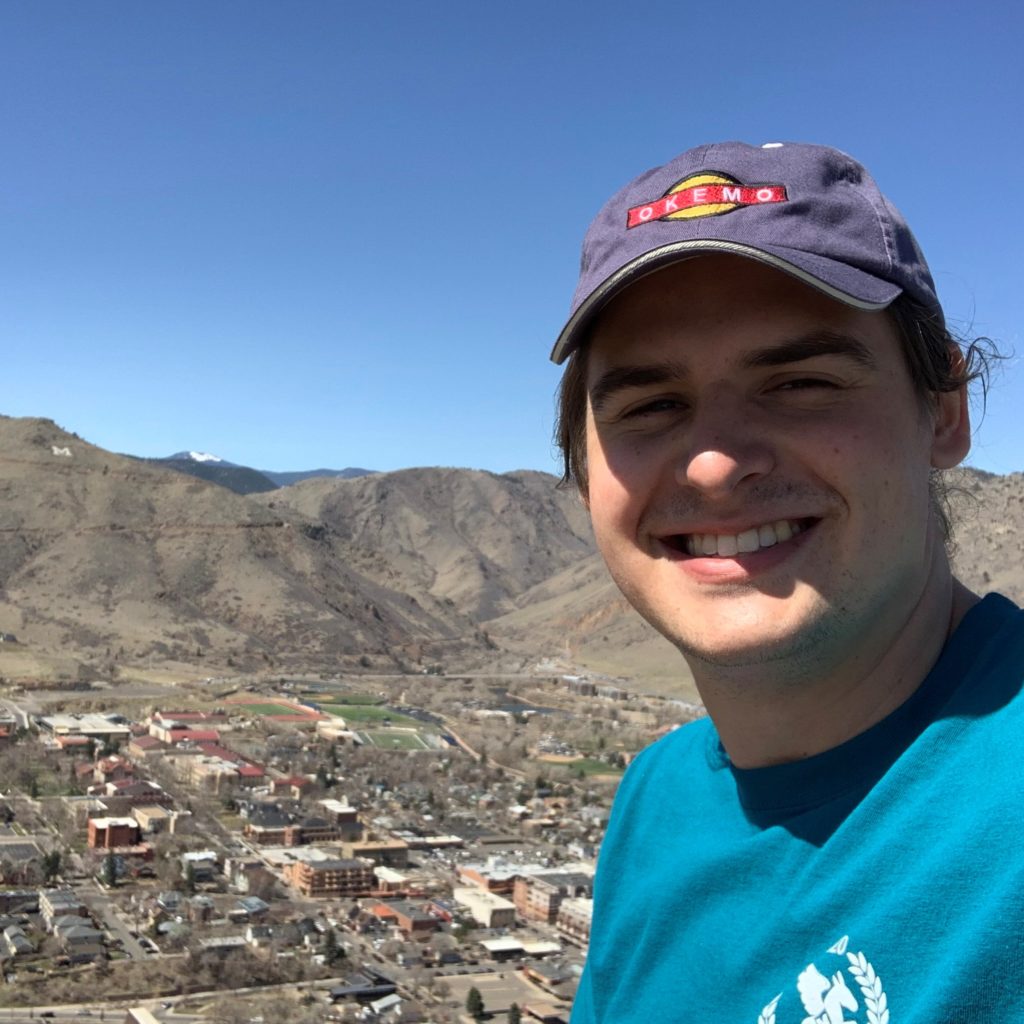 Project Role: Revegetation Designer
Project Role: Revegetation Designer
Class of 2021 | B.S. Environmental Engineering
Hometown: Aurora, CO
Growing up in Colorado and spending summers in Vermont, Brett has always loved exploring the great outdoors. He hopes to continue environmental consulting work in his professional career, preserving nature while feeding his curiosities surrounding watershed dynamics and chemical transport. Having an at-home maker space and vegetable garden would be pretty cool too, he says.
